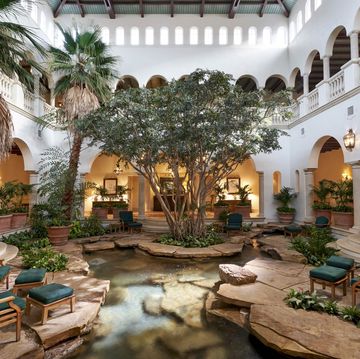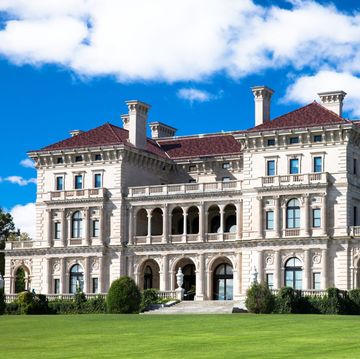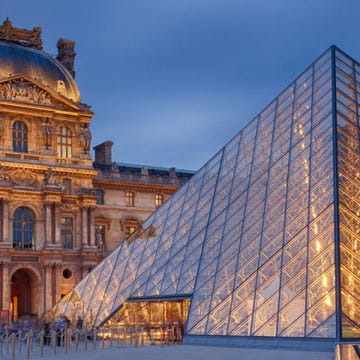Cathedral of Brasília in Brazil
 filipefrazao//Getty Images
filipefrazao//Getty ImagesOne of the most unique cathedrals in the world, Cathedral of Brasília resembles a hyperbolic crown in the middle of Brasília's Monumental Axis. Renowned Brazilian architect Oscar Niemeyer worked closely with urban planner Lúcio Costa to design the 16 boomerang-shaped columns to curve towards the sky as a gesture of communication. The impressive stained glass by French-Brazilian artist Marianne Peretti adds subtle color to the cathedral while allowing for natural light to flood the sanctuary.
St. Andrew's Cathedral in Singapore
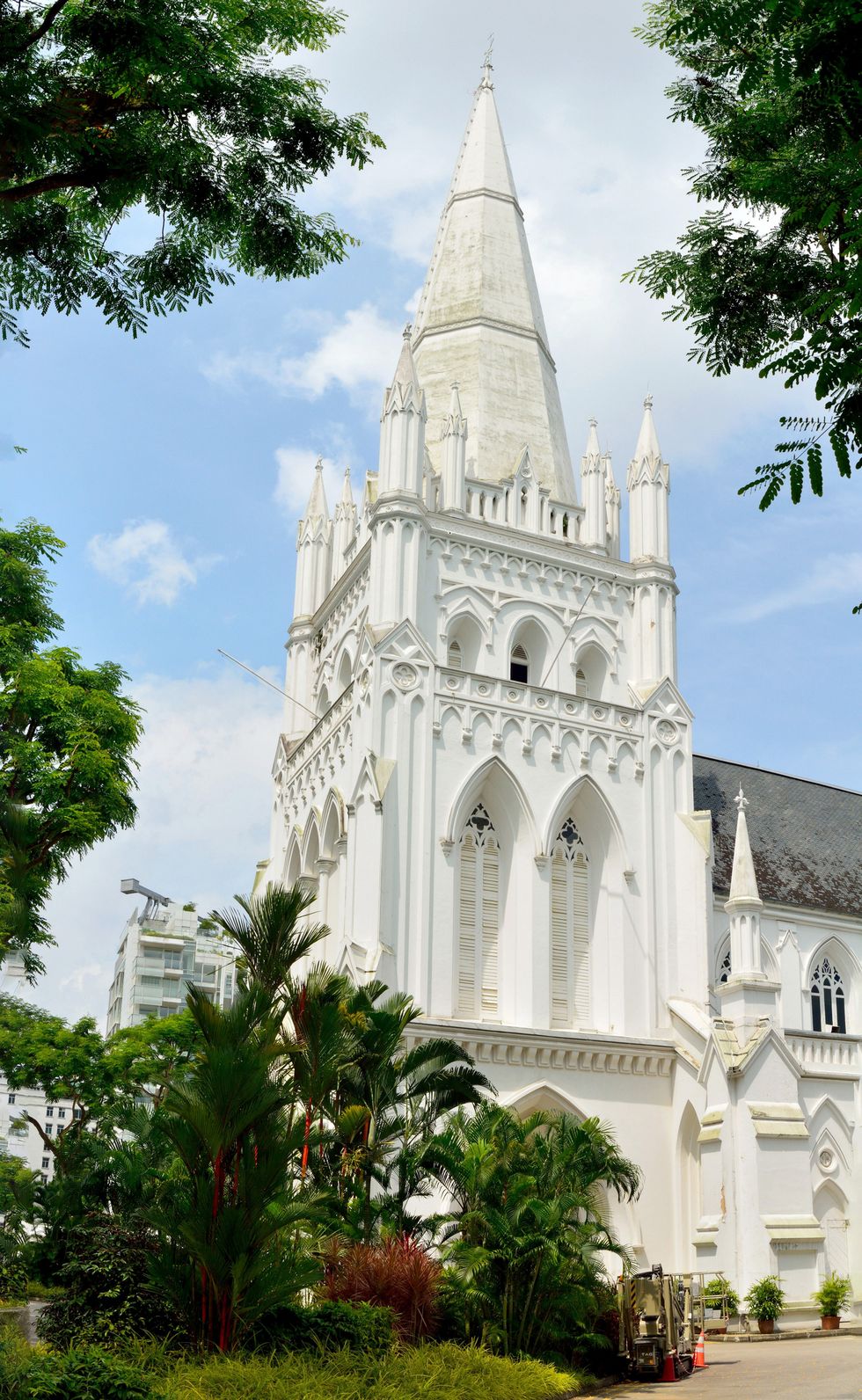 AlizadaStudios//Getty Images
AlizadaStudios//Getty ImagesNestled in Singapore's business district, St. Andrew's Cathedral offers a serene escape for the busy city surrounding it. The striking Anglican cathedral was built in the neo-Gothic style with elaborate stained-glass windows decorating the apse. The brilliant white finish is said to have come from Madras chunam, a plaster made of egg whites, shell lime, and sugar. However, preservationists have begun to question whether the plasterwork was used within the cathedral as they can not find traces of it on the walls.
Acropolium of Carthage in Carthage, Tunisia
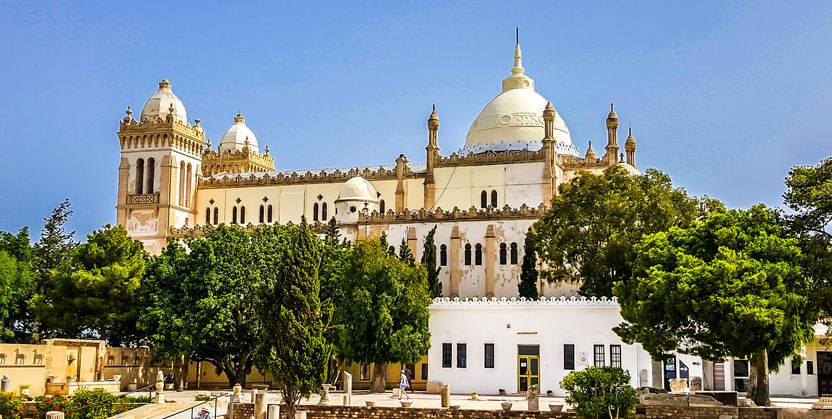 Inna Zabotnova//Getty Images
Inna Zabotnova//Getty ImagesThe Acropolium of Carthage may be considered a gem leftover from the Colonial era, but its role as a cultural and community landmark shines even brighter today. Hussein Bey II granted permission to France to build the cathedral on top of Byrsa Hill in 1830, but construction of the Byzantine- and Gothic-style site did not begin until the late 1880s. The cathedral is no longer used today for as a place of worship but rather, a cultural center where Tunisians can attend live musical performances.
Advertisement - Continue Reading Below
Basílica del Voto Nacional in Quito, Ecuador
 Banu R//Getty Images
Banu R//Getty ImagesIt took nearly 30 years and visits from two popes for the vision of a grand basilica in the heart of Quito, Ecuador to come to life. The largest neo-Gothic church in South America boasts an interesting series of gargoyles that resemble animals native to Ecuador, such as tortoises and iguanas. Even though Basílica del Voto Nacional was officially consecrated in 1988, construction has never been fully completed. Local lore suggests that if the basilica is were ever to be completed the world will come to an end instantly.
Holy Trinity Cathedral of Tbilisi in Tbilisi, Georgia
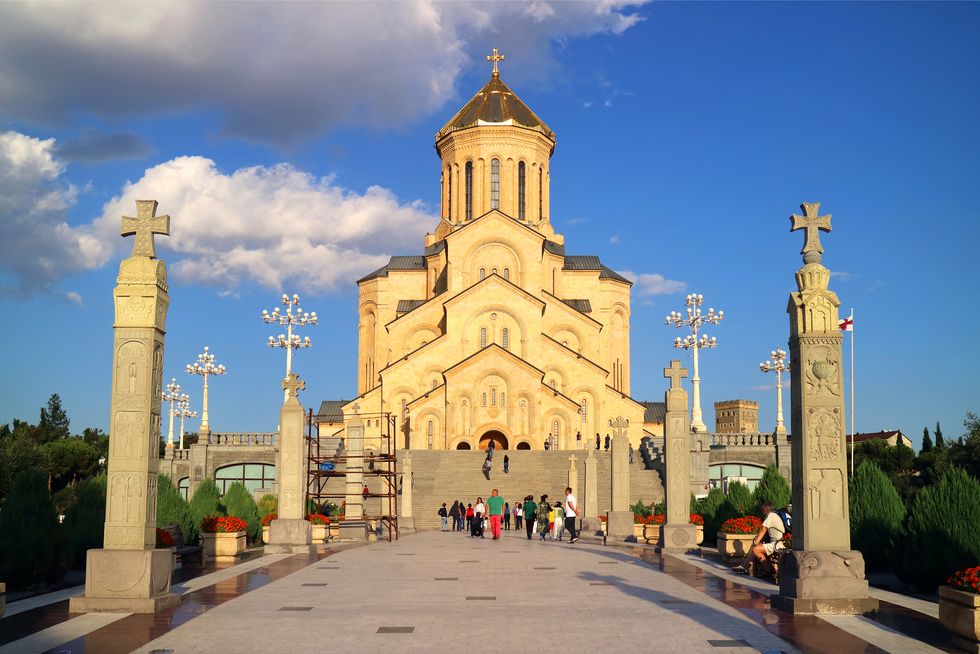 lovelypeace//Getty Images
lovelypeace//Getty ImagesThe Holy Trinity Cathedral, commonly known as Tsminda Sameba, sits high on St. Elijah hill as a symbol of Georgian independence and workmanship. Completed in 2004, the concrete and marble structure's carved towers and arches can been seen from nearly every corner of the city. Inside, richly decorated mosaics and miniatures depict icons of Georgian history and faith.
Duomo di Milano in Milan
 Anna Kurzaeva//Getty Images
Anna Kurzaeva//Getty ImagesConstruction of Duomo di Milano spanned six centuries, beginning in 1386, when Gothic architecture was in its heyday. Its construction site became a center of innovation and exchange of ideas for Europe's most talented engineers, architects, stone workers, and sculptors who worked on this masterpiece. Even Leonardo da Vinci had a hand in designing the cathedral's lantern tower in the 15th century. Napoleon had the facade completed during the 19th century and initiated the final stages of construction, which are still happening today.
Advertisement - Continue Reading Below
St. Patrick's Cathedral in New York City
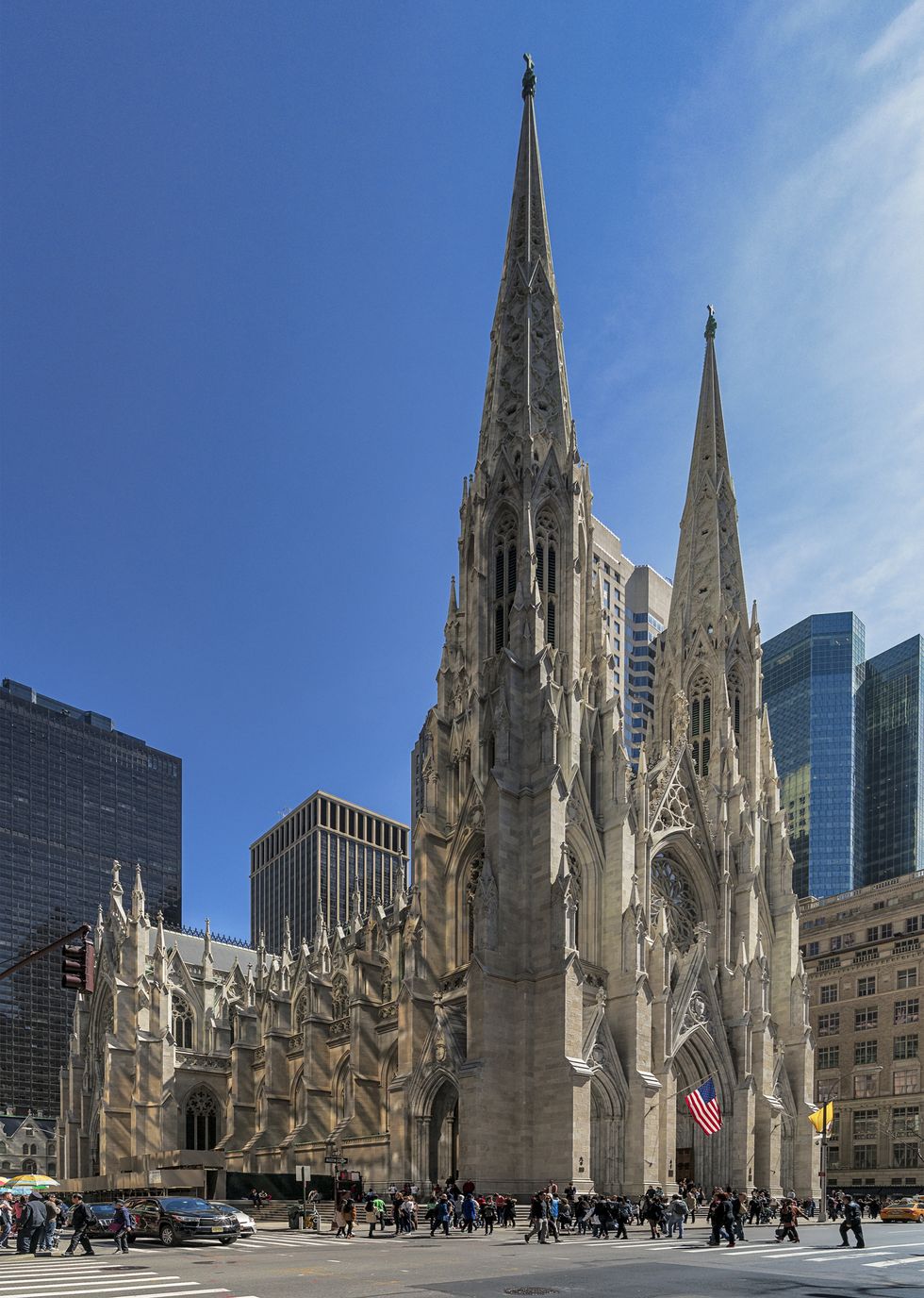 Doug Armand//Getty Images
Doug Armand//Getty ImagesThis iconic New York landmark receives approximately five million visitors a year. The cathedral was built in the latter half of the 19th century to symbolize the rise of religious freedom and tolerance in America.
Though criticized for building St. Patrick's Cathedral too far outside the city during this time (though it is now on some pretty prime real estate), Archbishop John Hughes believed in his vision of building the most beautiful Gothic cathedral in the New World, which would one day be "the heart of the city." Construction continued throughout the Civil War and was completed in 1878, fulfilling Hughes' dream.
Notre-Dame Cathedral in Paris
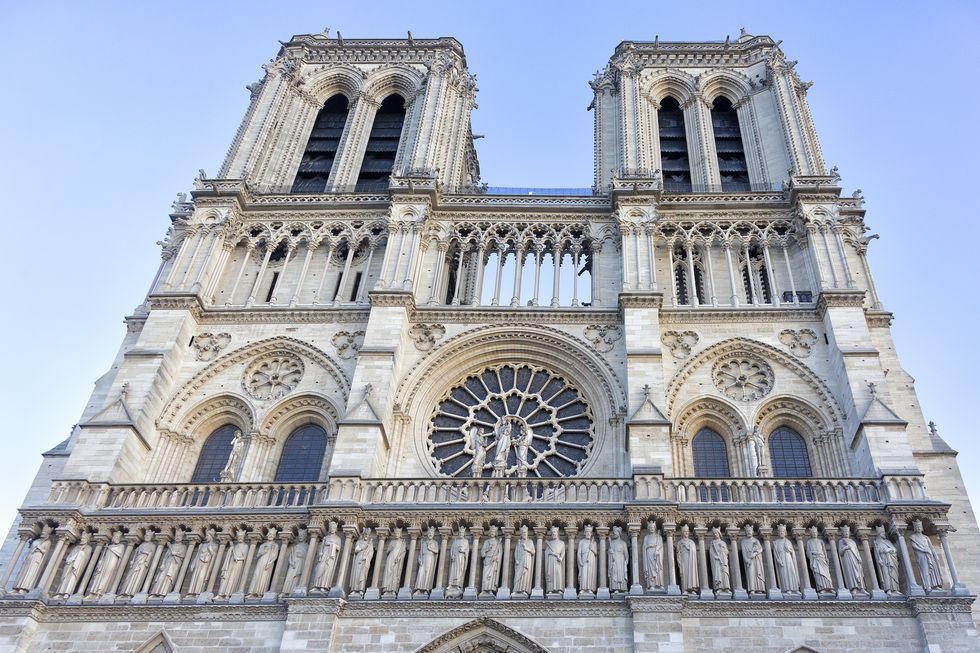 LuismiX//Getty Images
LuismiX//Getty ImagesNotre-Dame is not only one of the most famous cathedrals in Europe, but in all the world. Situated in the heart of Paris right off the Seine, construction of Notre-Dame began in 1163, and it was consecrated 26 years later.
While it's an impressive feat that the cathedral is still standing nearly 1,000 years after its construction, it has seen much damage and deterioration over the years. Its restoration can be attributed to Emperor Napoleon for making Notre-Dame his passion project after the French Revolution, as well as Victor Hugo's eponymous book. A fire broke out in 2019 during another restoration, destroying most of the roof and Viollet-le-Duc’s 19th-century spire.
Florence Cathedral in Florence
 borchee//Getty Images
borchee//Getty ImagesFormerly the Cattedrale di Santa Maria del Fiore, construction of this historic landmark began in 1296. Florence Cathedral is the fourth largest church in the world, housing frescoes, sculptures, and stained glass artworks that have made its interior just as famous as its exterior. The largest work of art in Florence Cathedral is Last Judgment, a fresco designed by Giorgio Vasari.
Advertisement - Continue Reading Below
Cologne Cathedral in Cologne, Germany
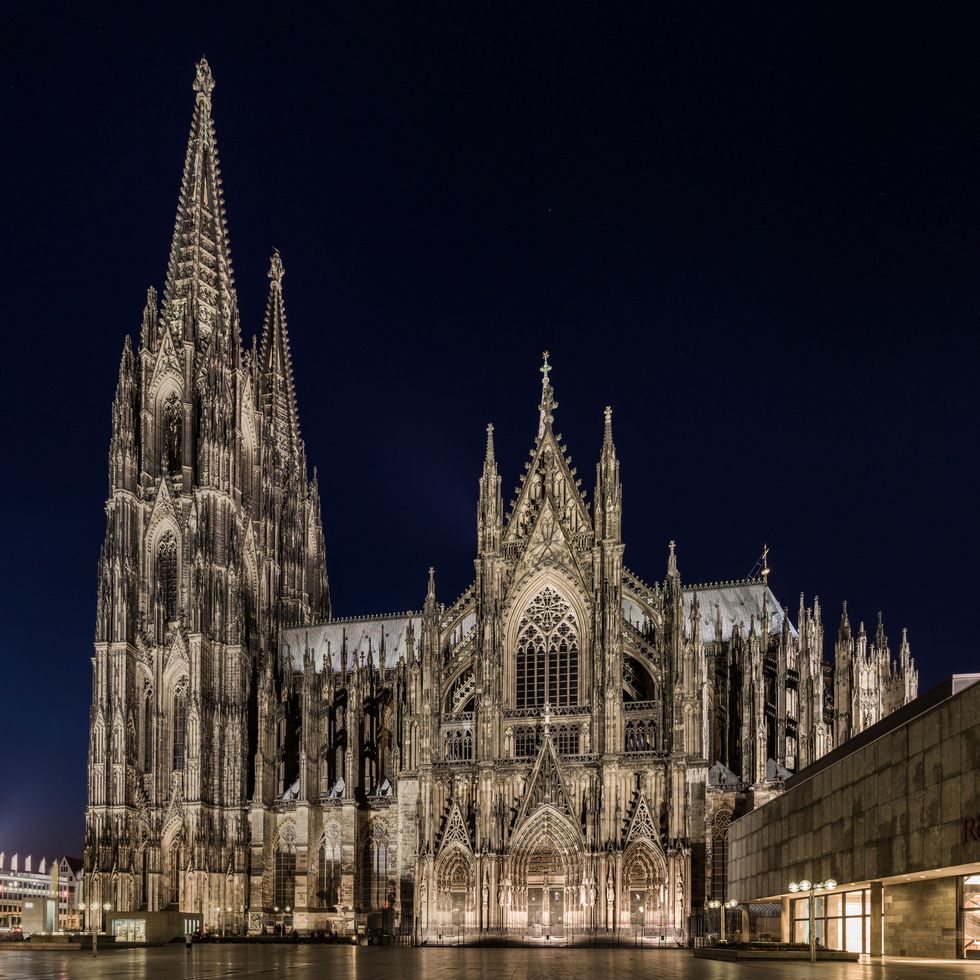 Rene Albrecht / EyeEm//Getty Images
Rene Albrecht / EyeEm//Getty ImagesThis High Gothic masterpiece took more than 600 years to construct, beginning in 1248, and bears witness to the endurance of Christianity in Europe. According to UNESCO, "No other Cathedral is so perfectly conceived, so uniformly and uncompromisingly executed in all its parts." Cologne Cathedral is described as marking the pinnacle of cathedral architecture, making it one of the most popular landmarks in Germany.
St. Paul's Cathedral in London
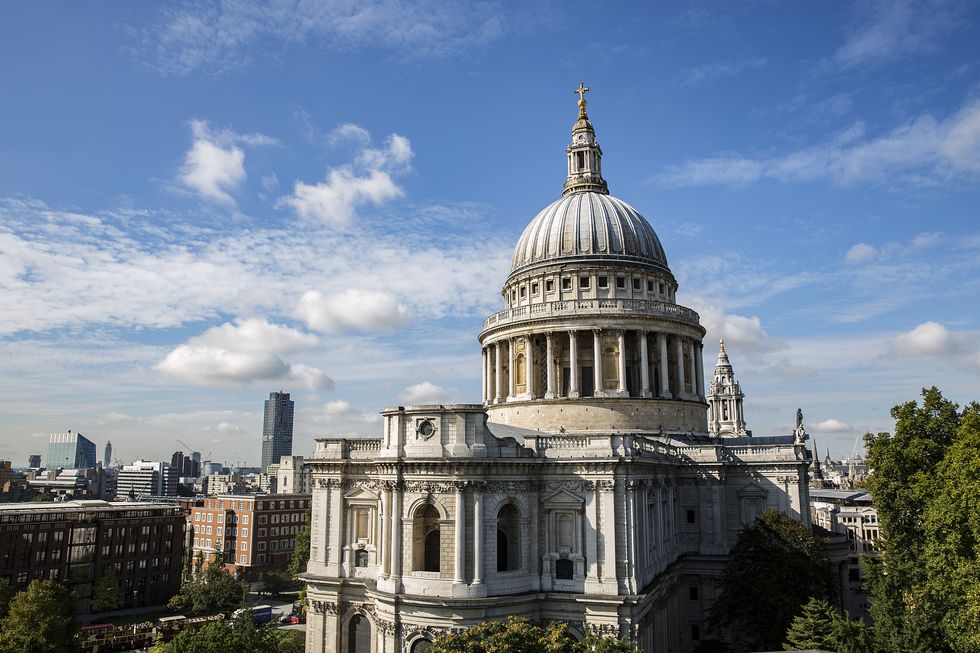 Leon Sosra//Getty Images
Leon Sosra//Getty ImagesSt. Paul's is an Anglican cathedral located in London's city center. The site used to house a Roman temple to Diana and was dedicated to Paul in 604 A.D. The cathedral has gone through five iterations, the final in the late 17th and early 18th centuries, built by Christopher Wren (known as the greatest English architect of his time) after it was destroyed in the Great Fire of London in 1666.
Wren combined Baroque, neoclassical, and Gothic elements, paying homage to both the English Restoration and 17th-century scientific philosophy. Some decorative changes were made to its interior in the 19th century to be more aligned with the Victorian style that dominated the period.
Santiago de Compostela Cathedral in Galicia, Spain
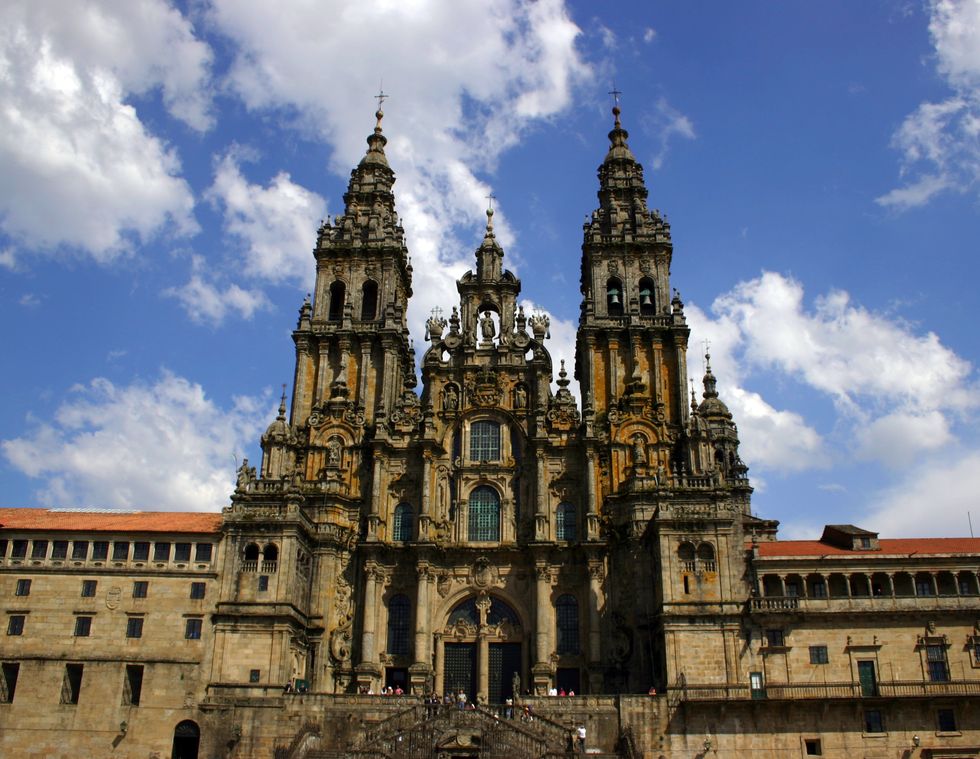 lcoccia//Getty Images
lcoccia//Getty ImagesThis stunning Romanesque Cathedral was first constructed beginning in 1075 and consecrated in 1211. While its original Medieval structure has been preserved, the cathedral has experienced much expansion and development throughout the Renaissance, Baroque, and neoclassical periods, making this cathedral a historic and architectural wonder. Its museum offers insight into the history, culture, and art of these movements, making it a must-see for those visiting the area.
Advertisement - Continue Reading Below
Burgos Cathedral in Burgos, Spain
 Ventura Carmona//Getty Images
Ventura Carmona//Getty ImagesConstruction on the Burgos Cathedral began in the 13th century, at the same time as the famous cathedrals in Paris's city center. Located in Burgos's historic city center in the northern Iberian peninsula, the cathedral is designed in the French High Gothic style and has influenced art and architecture since its construction.
One of its most notable influences was housing a Cathedral workshop in the 15th and 16th centuries, where artists from other parts of western Europe trained Spanish architects and sculptors. It became known as one of the most respectable schools of its time.
Alexander Nevksy Cathedral in Sofia, Bulgaria
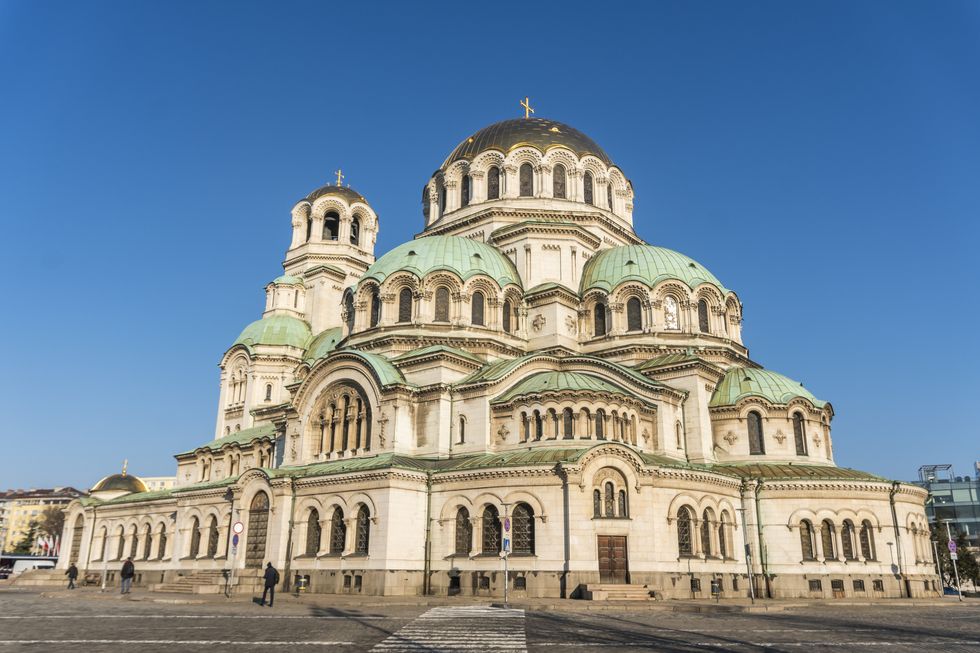 © Santiago Urquijo//Getty Images
© Santiago Urquijo//Getty ImagesAlexander Nevsky Cathedral is one of the largest Eastern Orthodox churches in the world and is one of Bulgaria's most popular tourist attractions. The cathedral was named after a Russian prince and honors Russian soldiers who died in the Russo-Turkish War of 1877, after which Bulgaria was freed from Ottoman rule. The cathedral was complete in 1912, with its name being temporarily changed shortly after, due to Russia and Bulgaria belonging to opposing alliances during WWI, but its original name was reinstated in 1920.
What makes this structure so unique is that it's comprised of pieces from across Europe. Its marble parts and light fixtures were made in Munich, metal elements in Berlin, and its gates and mosaics in Venice.
The Metropolitan Cathedral in Mexico City
 ©fitopardo//Getty Images
©fitopardo//Getty ImagesThe Metropolitan Cathedral is Latin America's oldest and largest cathedral, and its unique design was inspired by Mexico's indigenous and colonial influences. Its famous Altar of the Kings is the oldest-known example of Churrigueresque—Mexican Gothic—and its exterior was built by stones taken from Aztec temples. It houses the Roman Catholic Archdiocese of Mexico today and is one of the capital city's most popular landmarks.
Advertisement - Continue Reading Below
Notre-Dame Basilica in Quebec City, Montreal
 Image provided by Felipe Mulè//Getty Images
Image provided by Felipe Mulè//Getty ImagesMontreal's Notre-Dame is best known for its breathtaking, vibrant interiors and is a jewel of Quebec's religious history. The Gothic Revival structure was built in the 1820s and features dual towers reminiscent of Paris's eponymous cathedral.
Notre-Dame's striking interior design can be attributed to local artist, Jean-Baptiste Lagacé, who was supervised by architect Victor Bourgeau. Alongside being a place of Catholic worship, prayer, and teaching, the cathedral houses state funerals, celebrity weddings, and year-round musical performances featuring a 7,000-pipe Casavant organ.
Reims Cathedral in Reims, France
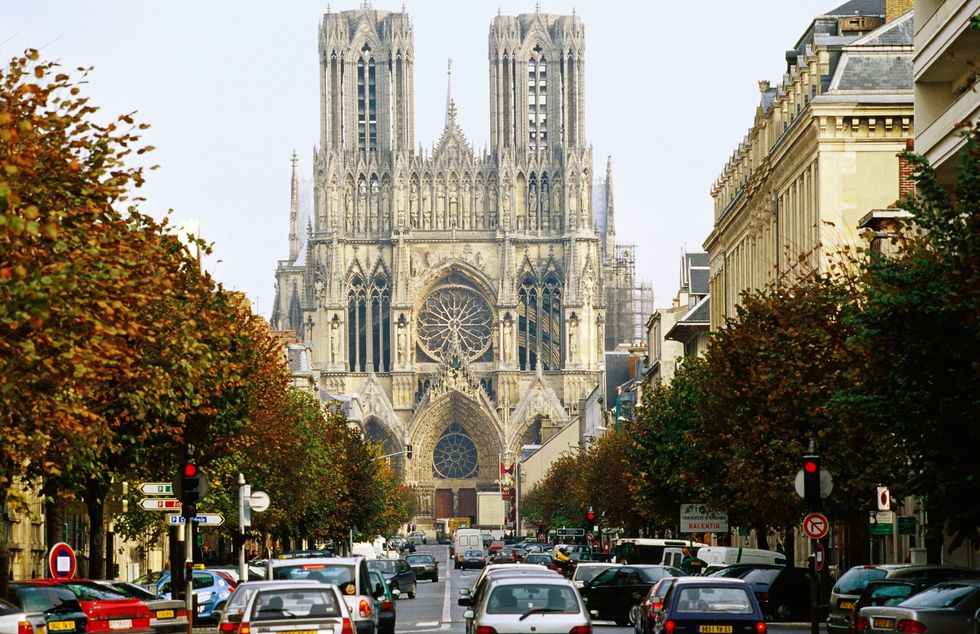 Oliver Strewe//Getty Images
Oliver Strewe//Getty ImagesAlso called the Cathedral of Notre Dame at Reims, the French High Gothic style structure is a historical landmark for many reasons. It was the sight of 25 coronations of the kings of France, from the 13th to 19th centuries, most notably of Louis VIII in 1223 and Charles VII in 1429 in the presence of Joan of Arc.
Construction of Reims Cathedral began in 1211, and while it was modeled on the Chartes Cathedreal, Reims incorporated several new architectural techniques of its time, such as bar tracery, which later became a signature element of French High Gothic architecture.
La Sagrada Familia in Barcelona
 danilovi//Getty Images
danilovi//Getty ImagesLa Sagrada Familia has famously been under construction since it was first designed in 1882. Its original design was of the neo-Gothic style but was reimagined when legendary architect Antoni Gaudí took over the project a year later, shifting toward his signature Catalan-Modernist style. Seven architects have been on the project since Gaudí's death, most recently, Jordi Fauli in 2012, who has carried out the project according to Gaudí's plans.
Advertisement - Continue Reading Below
Canterbury Cathedral in Canterbury, England
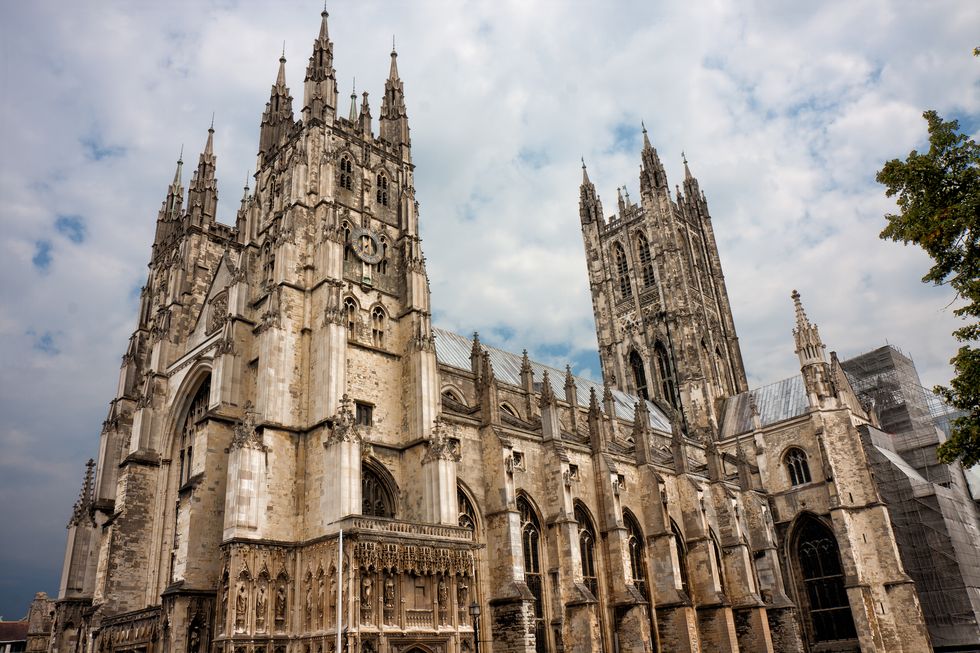 Angel Villalba//Getty Images
Angel Villalba//Getty ImagesCanterbury Cathedral is both an icon of British and church history. Its first archbishop, St. Augustine, arrived to the area as a missionary in 597 A.D.. It is the oldest church in England still in use. It's also likely the oldest organization in the English-speaking world.
Bourges Cathedral in Bourges, France
 Julian Elliott Photography//Getty Images
Julian Elliott Photography//Getty ImagesThe Bourges Cathedral honors St. Stephen, the first Christian martyr, and was built in the late 12th and 13th centuries. The cathedral is considered important in strengthening the popularity of Gothic architecture as well as symbolizing Christianity's popularity in Medieval France. The structure remains unaltered since its construction and its plan, unlike many other buildings of its time, and is still revered for its architecture, proportions, and decoration.

Lauren Wicks is a freelance writer and editor based in Birmingham, Alabama. Before going on her own, Lauren worked for brands such as VERANDA, EatingWell, and Cooking Light, and she covers all things lifestyle from interior design and luxury travel to wine and wellness.

Sarah DiMarco (she/her) is the associate editor at VERANDA, covering all things design, architecture, art, gardens, jewelry, travel, wine and spirits. She also manages social media for the brand.
Advertisement - Continue Reading Below
Advertisement - Continue Reading Below
Advertisement - Continue Reading Below





